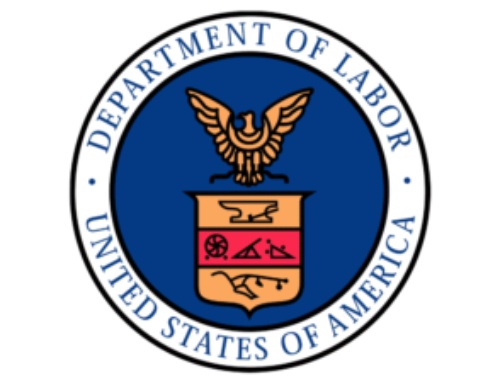
Grandview orchardists Don Olmstead II and Don Olmstead III say that injuries occur in their line of work, but they have had fewer problems since changing to shorter trees. (Erick Peterson for Good Fruit Grower)
Father and son, Don Olmstead II and Don Olmstead III of Olmstead Orchards in Grandview, Washington, remember days when workers would set up a large ladder next to a tree, scale the ladder, pick, and descend, and then move the ladder around the same tree. Ladders might be moved five times around a single tree.
Done with buckets in hand, picking was dangerous, and workers were frequently injured. The process was slow and precarious, and pickers sometimes fell.
Orchard foremen at the time would instruct employees to be aware of foot and ladder placement and tell them to be careful, but the industry faced a challenge that continues to threaten worker health, explain the Olmsteads, who have 120 acres of cherries.
For Olmstead Orchards, introducing shorter trees is part of the answer. Olmstead Orchards has brought down many of its cherry trees, and is creating a pedestrian style of orchard. Trees are planted five feet apart and will be only 10 feet tall when mature.
“This is a big push in our industry,” the elder Olmstead said. “It is far more efficient to keep people on their feet and on the ground.”
Not only is it safer for people to do their work without stepping up and down ladders, it is faster for them to move from tree to tree, not having to move around a tree and stopping to reset a ladder.
“If you can put 20 people in a row in a pedestrian orchard, they can pick that in two hours, and it might take them four hours in a conventional orchard,” said the elder Olmstead. This change at their orchard is taking place alongside other changes. Trees are also being placed closer together.
He said that shorter trees have thus brought benefit, mostly in making operations safer, but there is an investment risk. Frost is a greater danger to shorter trees whose production is closer to the ground.
Platforms
Julie Loreth, human resources manager at McDougall and Sons of Wenatchee, Washington, pointed out another way in which the orchards of today are safer than those of yesteryear—more platforms.
“The future of the industry is moving toward platforms,” she said. Their use removes all of the problems associated with ladders, as well as increasing efficiency.
A look at information from Washington State might show why more and more orchards are shying away from ladders.
Washington State Department of Labor and Industries issues warnings of the dangers of ladders in orchards, pointing out the many instances of injury when workers misuse good ladders or properly use bad ladders.
Of 21 agriculture-related injuries from slips and falls posted by the department on its website from 2014 to early 2015, ladders were directly cited ten times, with some falls resulting in broken bones, injury to backs and pelvises, and one death.
Meanwhile, injuries on platforms, at least as reported on the Department of Labor and Industries site, are rare.
Safety education
Teaching employees the ins and outs of orchard safety, the Olmsteads said, is not easy when turnover is great. Olmstead Orchards, like every other fruit grower in the Yakima Valley, has days when it employs only a handful of people. A day later, it might have over a hundred workers.
Employment is seasonal, of course. More than that, however, many people come and go throughout a single season, taking one job, leaving it for another and then returning to the first employer, depending on whoever is offering the most money in a given week.
As many of these workers are strangers to their employers, it is exceedingly difficult to keep up with an employee’s education, the Olmsteads say. So all workers need to be briefed on safety measures at the start of work, and they need to be supervised carefully, to make sure that they are not a danger to themselves or others.
When following the advice of regular safety lessons, workers can avoid most injuries, though some persist.
“There are little things,” the younger Olmstead said. “Like wrist injuries—from dropping brush, changing tractor tires, and stuff like that. There’s always some way to end up with stitches. But you try to take things slow and think about what you’re doing.”
Every orchardist wants to reduce liability and retain an experienced and strong workforce, the Olmsteads said. In addition to keeping up with worker education, they try to create an environment in which safety is more likely.
“These are all things that you have to manage,” the elder Olmstead said. “It’s like everything else. You’re not going to make everything perfect, and there are a zillion possibilities for getting hurt. You just do your best to make things safe, you keep your eyes out for people doing things wrong, you correct people and things when you need to, and you just do your best.” •
Erick Peterson is based in the Lower Yakima Valley and writes on topics related to agriculture and business.






Leave A Comment